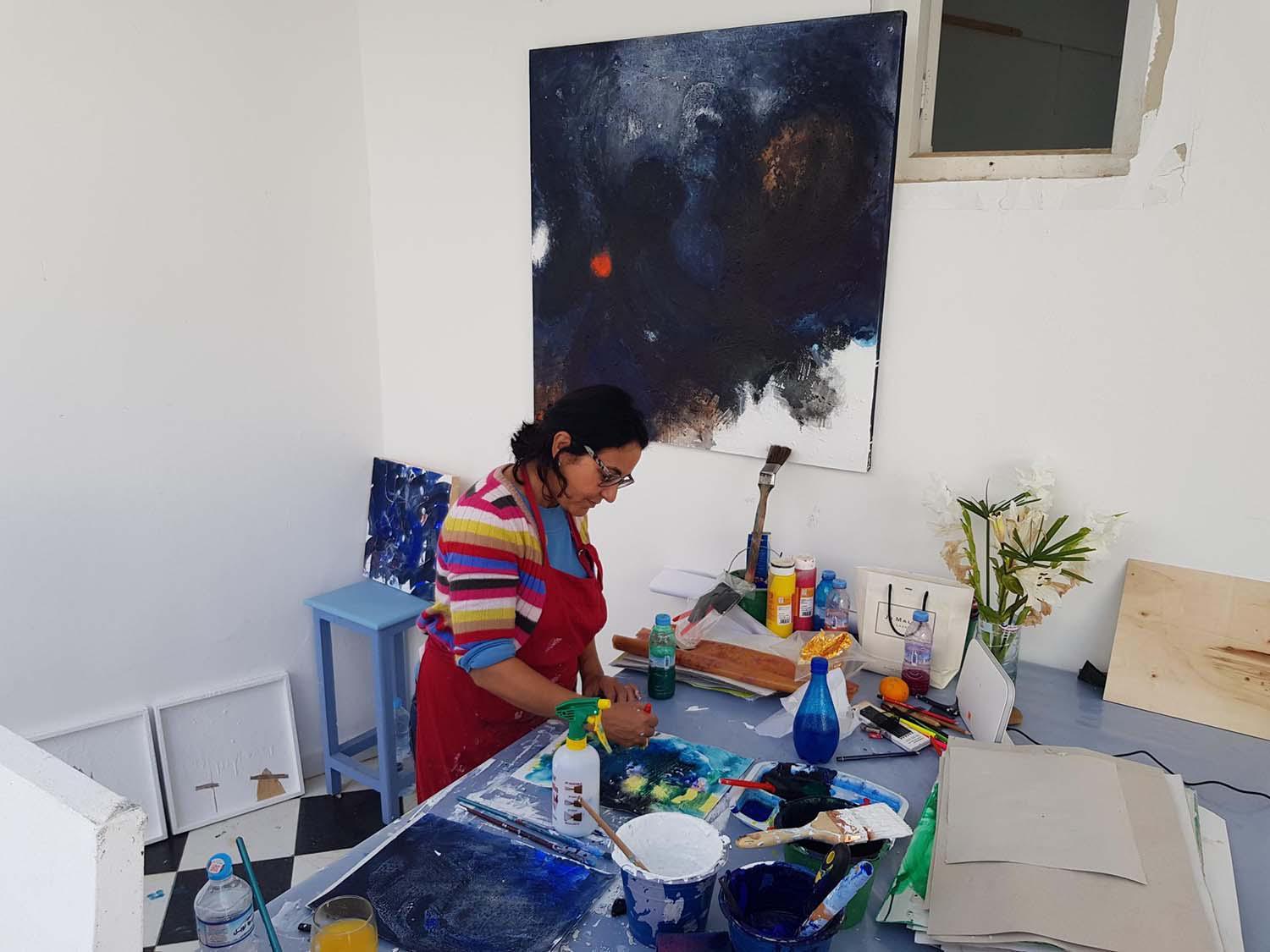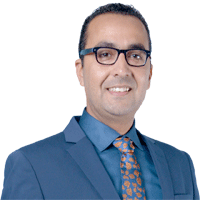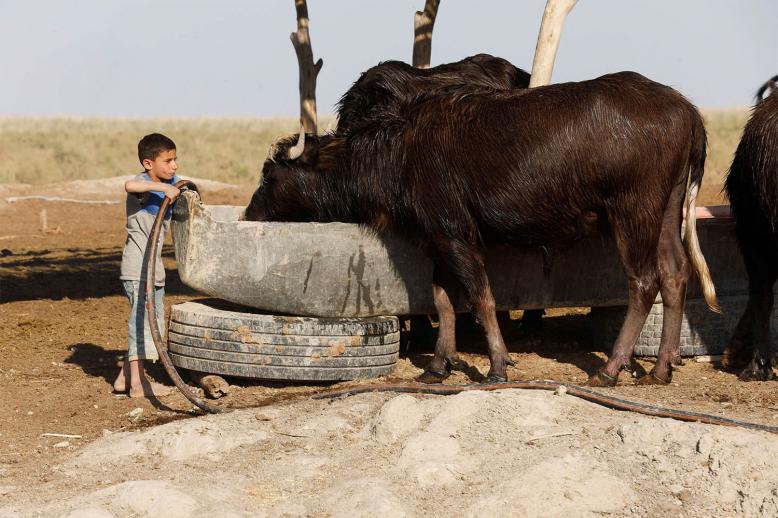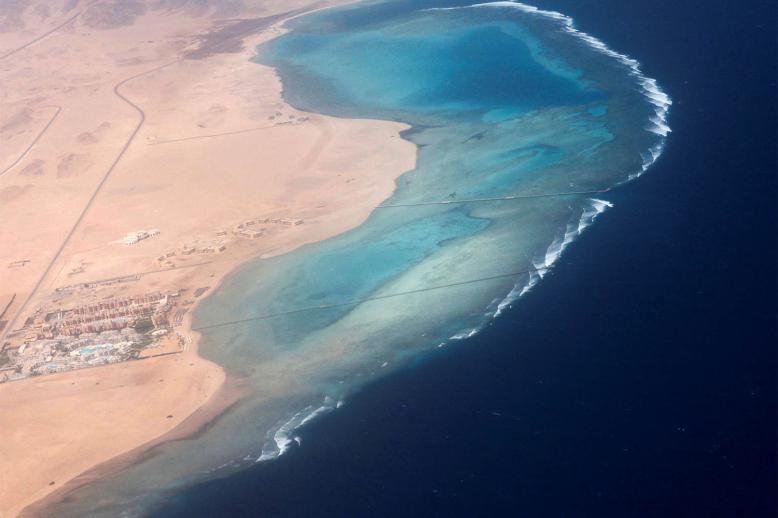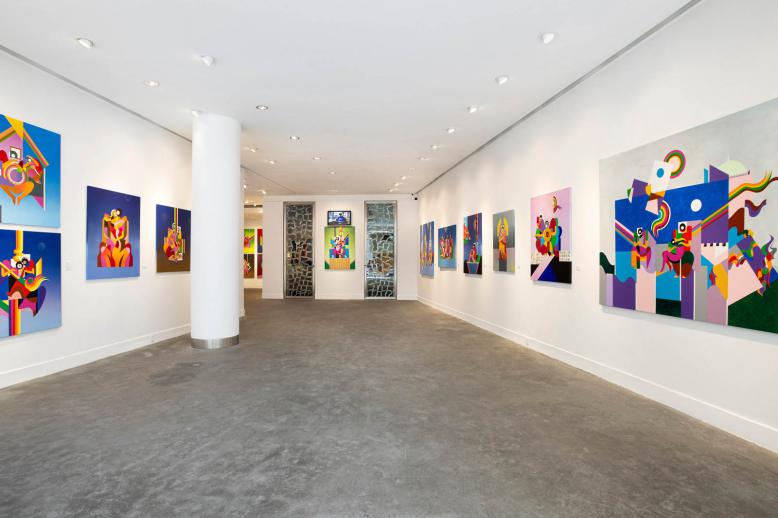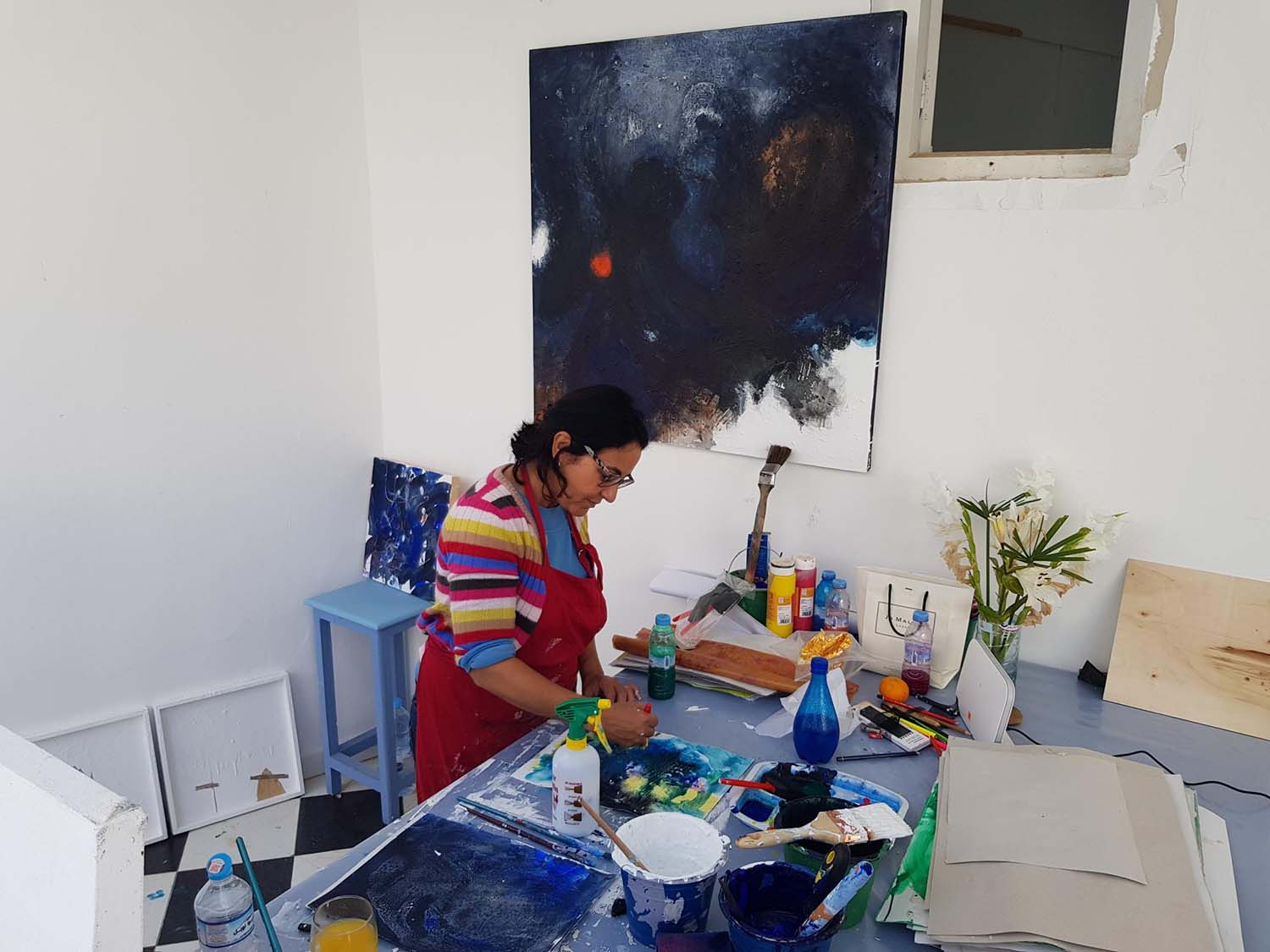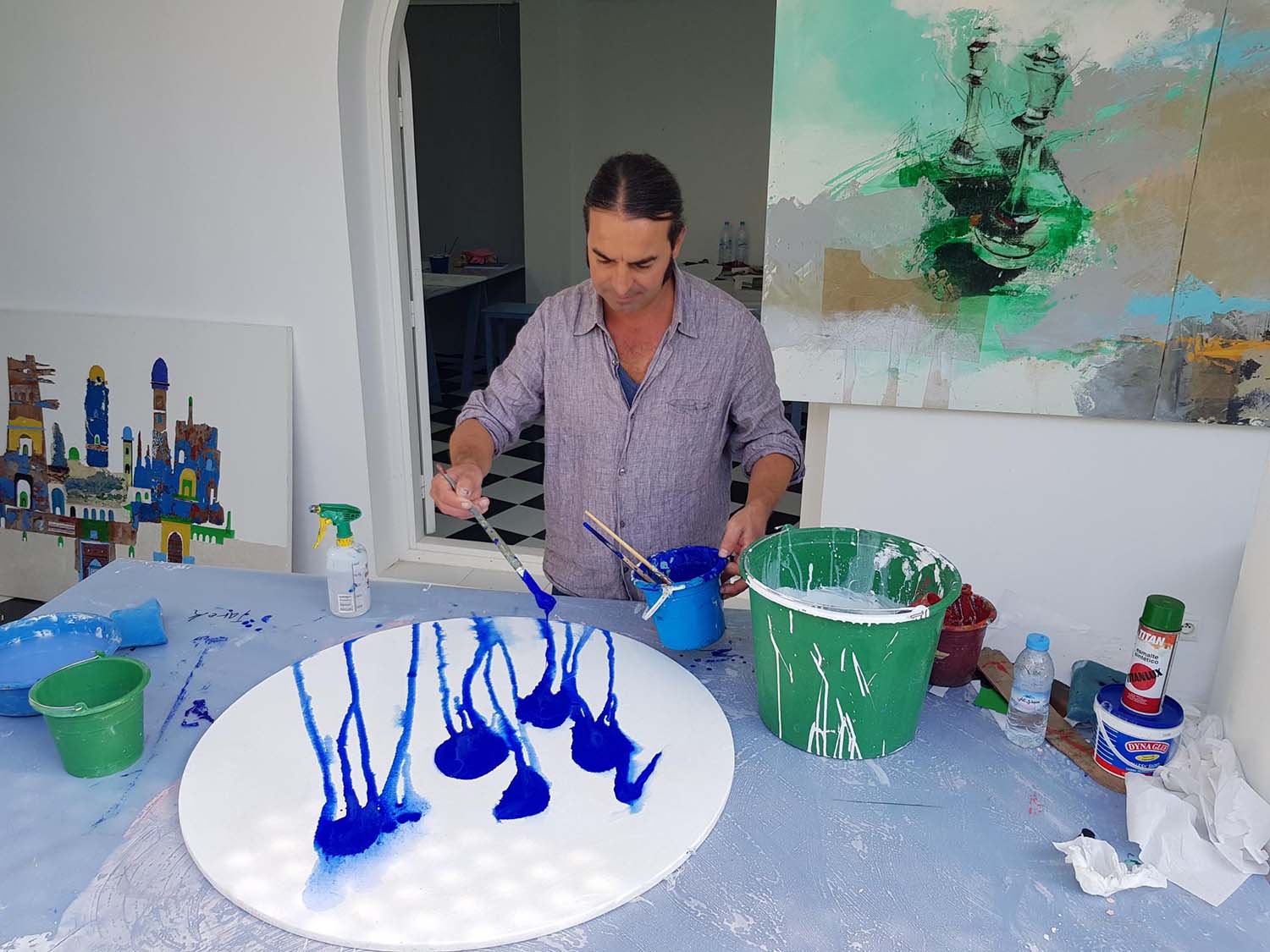
Assilah, COVID-19, sea inspire artists at Moussem
ASSILAH – Morocco’s northern city of Assilah, the sea and the COVID-19 pandemic have inspired international artists who took part in the 42nd edition of the Assilah cultural festival.
Dark colours dominated London-based artist Choua El Kharraz Dickens’ paintings as a way of expressing herself of the tough times that the world has been through since the coronavirus pandemic began.
“The dark colours reflect the emotional moments during which we lost some loved ones and the harsh COVID-19 period that has affected all of us,” she told Middle East Online as she works on her painting with meticulous brush strokes.
She was using all local materials used in construction such as marble dust and Nila powder for her abstract paintings.
“I love playing with texture because my education was in design and textile,” said Dickens whose passion for art allowed her to mix it with her education in design.
Dickens shares her time between her neighbourhood community of artists in London and her hometown of Assilah where she regularly takes part in the International Cultural Moussem of Assilah.
Tarek Faitah, born and bred in Assilah, is working on a collection of paintings with a vivid blue inspired from the Atlantic Ocean.

“The bright blue colour I’m using is an inspiration from the sea and its waves because we, Zailashis (citizens of Assilah) are very attached to the sea and the blue paint that adorn houses’ wall in the medina,” said Faitah.
Some of his artworks are hanging in the ceiling of the Raissouni Palace as a tribute to renowned artist Mohamed Melehi, who died October 28, 2020 and who was considered as the leader of Moroccan modern art.
Faitah held several solo exhibitions in Spain, including Alicante and Madrid. He is also into clothing design and works with recycled materials as a way to show his awareness of the environment.
“The recycled materials have more meanings such as history, decaying colours and wear and tear which make them unique,” said Faitah.
Not far from him, 25-year-old artist Sarah Ahlalom, a native of Assilah who grew up in the Moussem, is immersed in her canvas, oblivious to the black paint on her face.
“I love working on anything gestural and things that are related to trees’ roots,” said Ahlalom.
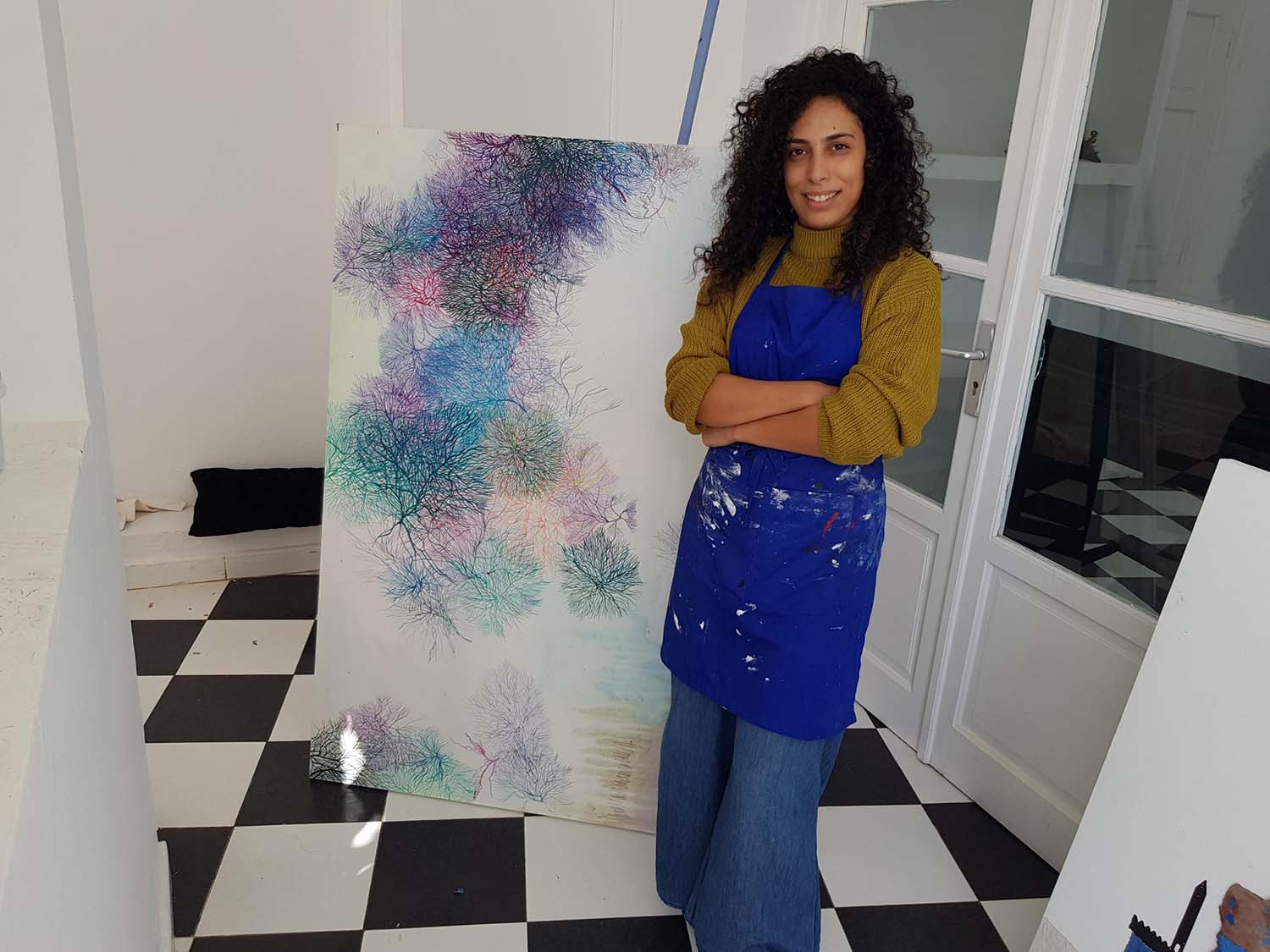
“These roots have the same shapes as human beings’ veins which are symbols of life,” she explained, adding that she likes to relate humans with the surrounding nature and translate it into artistic paintings.
Her studies at the Tetouan Institute of Fine Arts in have been impacted by graphics and lines, which inspired her to start drawing shapes in the form of roots besides the coral’s structure.
“To sum it up, my paintings are some kind of a tribute to our mother nature,” she said.
Mohamed Anzaoui, who has started drawing since he was a child at the children’s workshop of the Assilah Cultural Moussem, was trying to create something out of the ordinary as he gazed at his unusually shaped canvases.
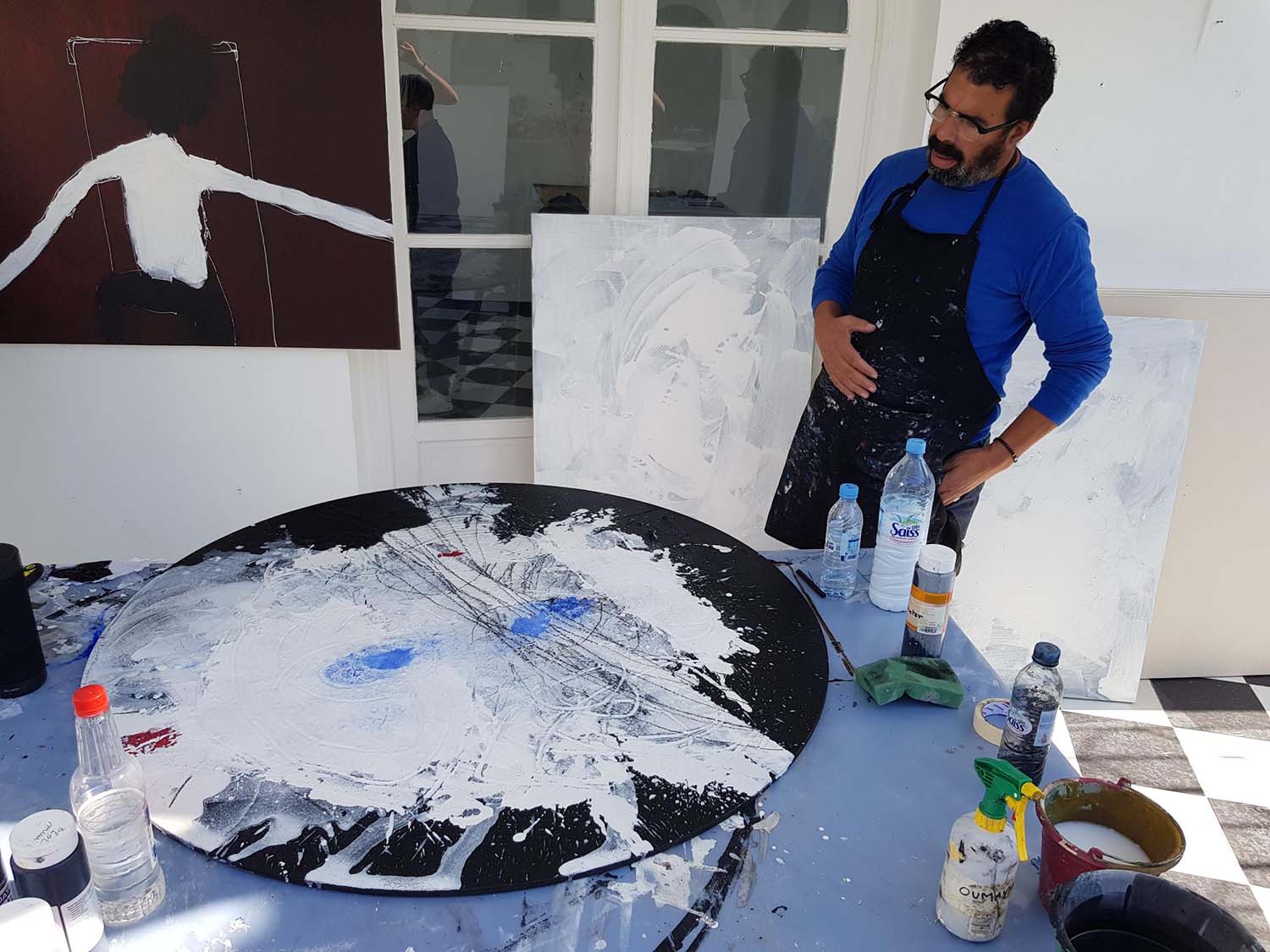
“Every year at the Moussem, I seek to come up with something beyond my routine work and conceive something new which will be eye-catching,” said Anzaoui.
“The Moussem is the best opportunity to interact with different artists from all over the world and exchange, experience, ideas and expertise,” he added.
Anzaoui brought his round-shaped canvases to the workshop to work on them.
“Working on a round-shaped canvas is not like working on the most classic shapes. For me, the circle does not have limits,” said Anzaoui with his resonant voice as he mixes both abstract and illustrative styles in his paintings.
“I use different forms of lines in my paintings in order to break the symmetry of things. I like to highlight creative chaos in my works,” he concluded.
Inside the workshop, printmakers were busy working on their metallic plates as the strong smell of materials overwhelmed the vast room and each one of them was drawing their inspiration from different backgrounds.
Syrian artist Ali Ali Sultan said he was thrilled to take part for the first time in the engraving experience in Assilah.
“The goal of my participation is to exchange expertise in both engraving on bronze and painting,” said Ali.
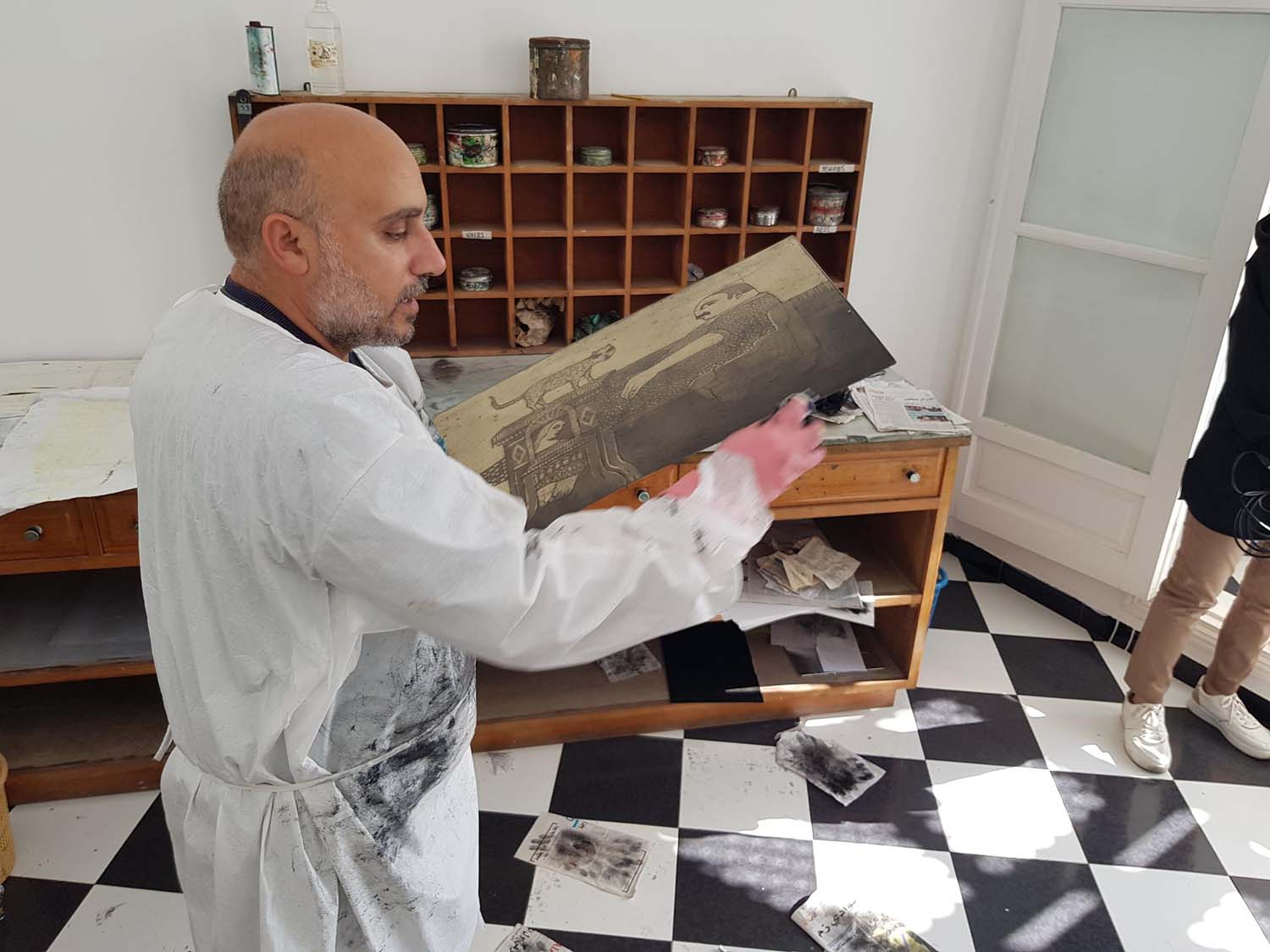
“The theme of my current piece of artwork on the metal board is mythology as I try to highlight the ancient Syrian civilisation and the look of human beings during that time,” said Ali as he explains the inclusion of the cat was inspired from the errant cats in Assilah.
Ali was emphasising the big size of the Arab man holding prayer beads in his engraving, saying that it reflected the typical shape of an Arab leader during that time.
Spanish artist Roser Sales Noguera whose artistic work is related with the movement of landsart (landscape) said she went for a walk on her first day in Assilah to let things to catch her.
“I collected antique tiles from buildings and their through history I’m building all the work,” she said.
She was drawing the pieces of tiling on paper then collaging them.
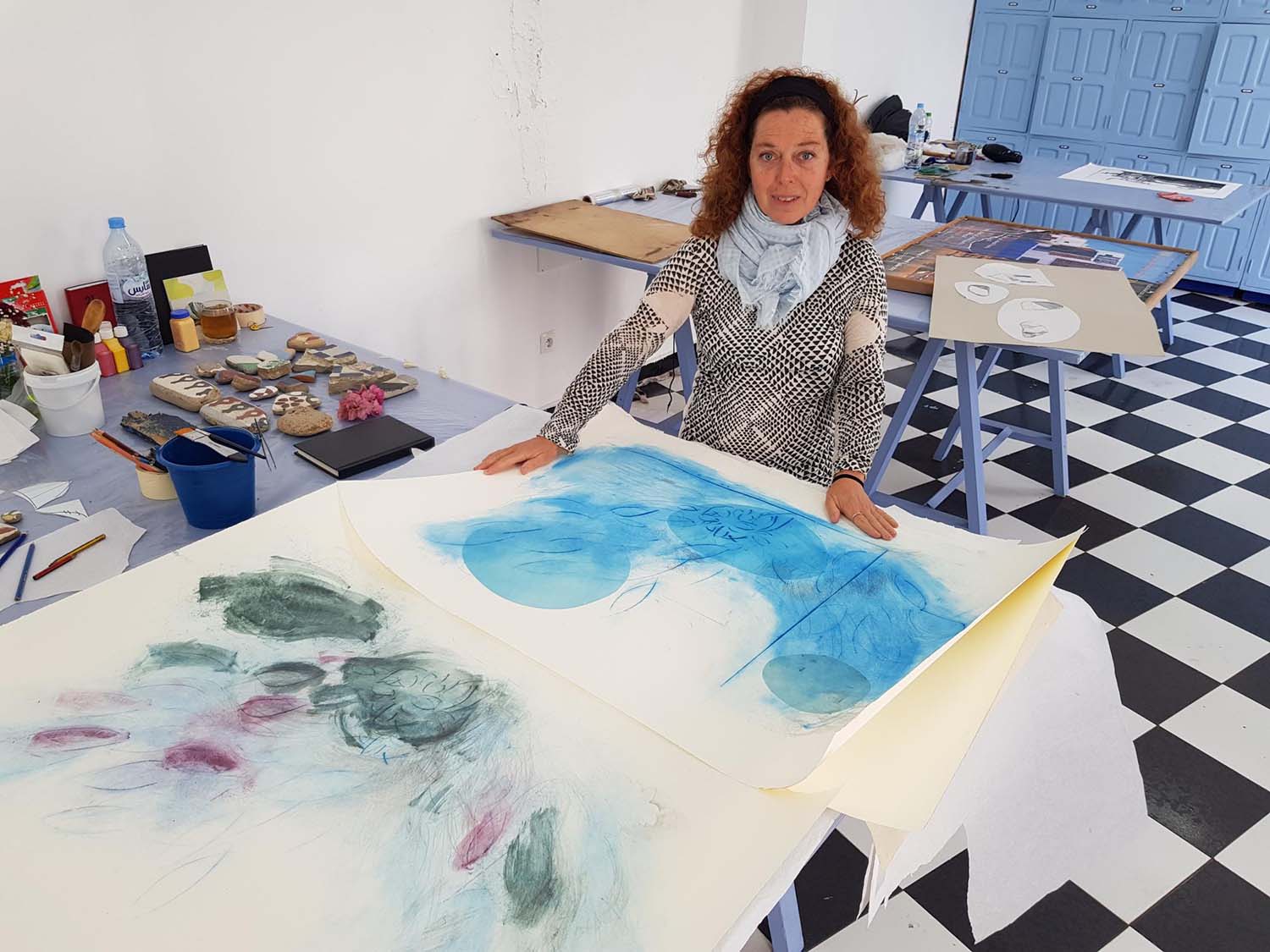
“All these pieces of tiling are going to be a photographic work in black and white and every pebble is going to be like a person showing himself strongly,” said Roser.
“It’s not just something I found, it’s all the history that is behind,” she explained as she showed her other printmaking work.
“When I arrived in Assilah, it was so windy and rainy that it inspired me to produce this piece,” she said, adding that her experience in the Moroccan city has been a thrilling one.
Roser held solo and collective exhibitions in several cities across the world including New York, Amsterdam and Paris, besides working with field galleries in Barcelona.
In the other side of the workshop, Sanae Sarghini Aida clad in a white apron is carefully immersing her zinc board in acid.
“I put some varnish on the surface of my drawing. But in some of the surface where there is no varnish, the acid will dig and give some depth in order to get the light and shadow contrasts,” said Sanae, who learned engraving when she studied at the Tetouan Institute of Fine Arts.
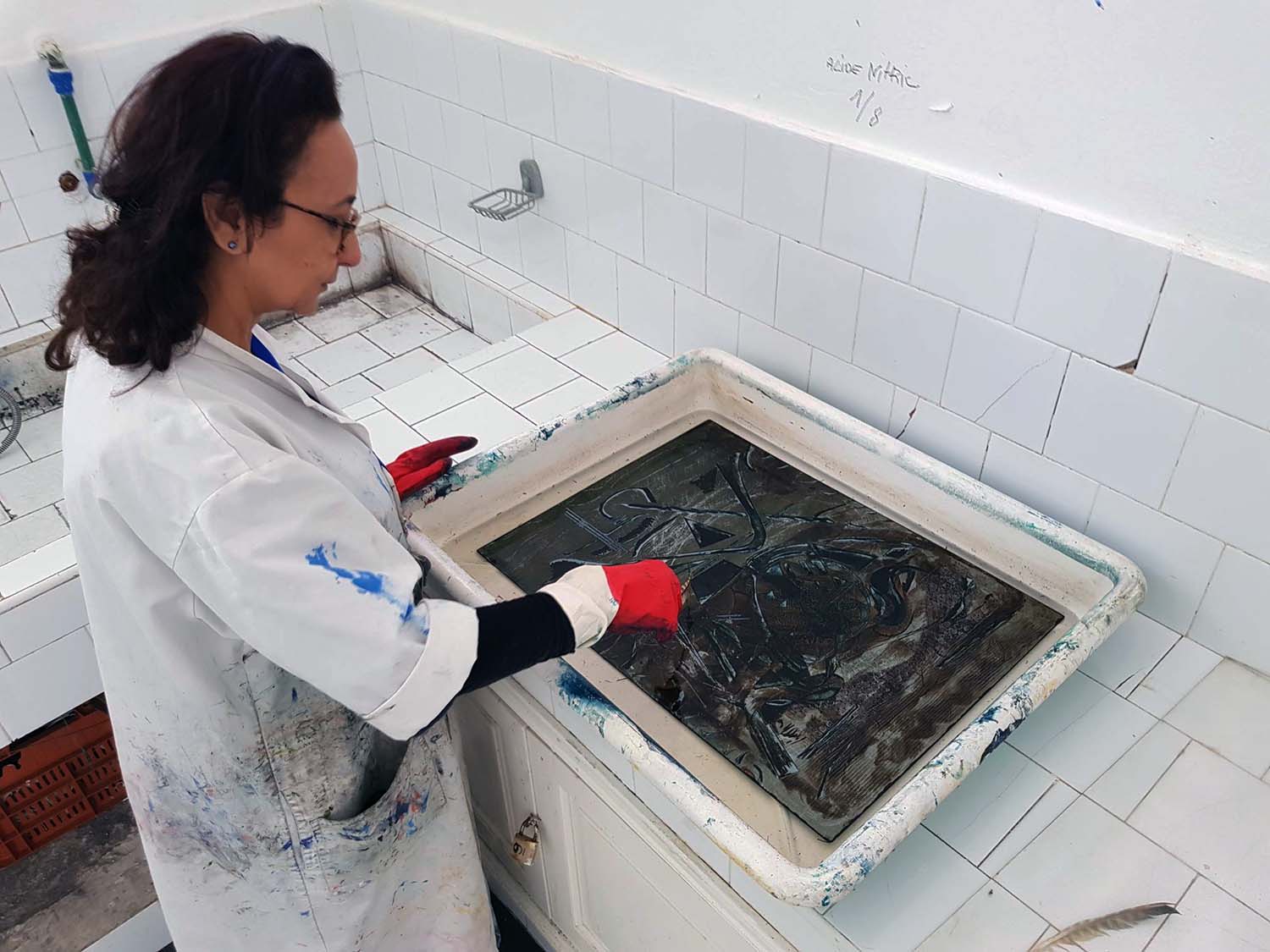
“I had the opportunity to take part in the Assilah festival back in 1989 which gave me a priceless opportunity along with other students from the institute to do a training course on engraving,” she said.
“Since then, I really loved this technique and had the chance to use different materials with renowned printmakers from across the world such as Peruvian Juan Valladares,” said Sarghini who took part in several collective exhibitions across Morocco.
The workshop was held at the “Jardins du Palais de la Culture” from October 30 to November 15 in Assilah.

